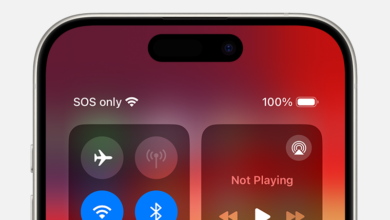Ultimate Guide to Topaz Video AI: Features, Benefits, and How to Use It

Topaz Video AI In the fast-evolving world of video production, achieving high-quality, professional-grade footage is more accessible than ever, thanks to artificial intelligence. Among the leading tools in this space is Topaz Video AI, a powerful software designed to enhance, upscale, and restore videos using cutting-edge machine learning technology. Whether you’re a filmmaker, content creator, or hobbyist looking to breathe new life into old footage, Topaz Video AI offers a suite of features that make it a standout choice. This comprehensive 1500-word guide explores everything you need to know about Topaz Video AI, from its core functionalities to practical tips for getting the most out of the software, optimized to rank highly on Google.
What is Topaz Video AI?
Topaz Video AI is a premium video enhancement software developed by Topaz Labs, a company renowned for its AI-driven image and video processing tools. Unlike traditional video editing software, Topaz Video AI focuses on specialized tasks such as upscaling, denoising, deinterlacing, frame interpolation, and stabilization, all powered by advanced neural networks. The software is designed to transform low-resolution or poor-quality footage into crisp, high-definition videos, making it an invaluable tool for restoring old home movies, enhancing DSLR footage, or upscaling content for modern 4K and 8K displays.
The latest version, Topaz Video AI 6, introduces groundbreaking features like Project Starlight, the first-ever diffusion model for video restoration, which promises unparalleled clarity and detail when upscaling videos to 4K and beyond. With support for both Windows and macOS, Topaz Video AI operates as a standalone application or as a plugin for popular editing software like Adobe After Effects and DaVinci Resolve, offering flexibility for professionals and beginners alike.

Key Features of Topaz Video AI
Topaz Video AI is packed with features that cater to a wide range of video enhancement needs. Below are the core functionalities that make it a must-have tool:
1. AI-Powered Upscaling
Topaz Video AI can upscale videos from SD (480p) or HD (1080p) to resolutions as high as 8K or 16K, without the pixelation or artifacts common in traditional upscaling methods. Its AI models, such as Proteus, Gaia HQ, and the new Starlight, analyze multiple frames to extrapolate details, resulting in sharper, more natural-looking footage. This is ideal for enhancing low-resolution content like VHS tapes, DVDs, or YouTube videos for modern displays.
2. Denoising and Noise Reduction
Noise and grain can ruin the visual quality of videos, especially those shot in low-light conditions or with older equipment. Topaz Video AI’s denoising capabilities use AI to distinguish between noise and actual image details, producing clean, professional-grade footage. Models like Artemis excel at reducing noise while preserving textures, making it perfect for restoring archival footage.
3. Deinterlacing
Older videos, such as those from DVDs or broadcast TV, often suffer from interlacing artifacts, where frames appear as comb-like patterns. Topaz Video AI’s deinterlacing feature, praised for its outstanding performance, converts interlaced footage into smooth, progressive video, enhancing clarity and watchability. Users can choose presets like “Deinterlace Footage” for quick results or manually adjust settings for precision.
4. Frame Interpolation and Slow Motion
Using models like Apollo and Chronos, Topaz Video AI can generate new frames to increase frame rates or create ultra-smooth slow-motion effects. For example, it can convert 24fps footage to 60fps or even 120fps, making action sequences more fluid or adding dramatic slow-motion effects without compromising quality. This is particularly useful for sports footage or cinematic projects.
5. Video Stabilization
Shaky footage can distract viewers and diminish production value. Topaz Video AI’s stabilization feature, including auto-crop and full-frame modes, corrects camera shake and rolling shutter issues, producing steady, professional-looking videos. The Themis model further reduces smearing caused by slow shutter speeds, enhancing clarity in motion-heavy scenes.
6. Project Starlight: Diffusion-Based Restoration
Introduced in Topaz Video AI 6, Project Starlight is a game-changer for video restoration. This diffusion-based model excels at enhancing low-quality or damaged footage, bringing it to stunning 4K resolution with unprecedented detail. It’s particularly effective for reviving old home movies or low-resolution archival content, making them look modern and vibrant.
7. SDR to HDR Conversion
Topaz Video AI now supports converting standard dynamic range (SDR) videos to high dynamic range (HDR), enhancing contrast, color gamut, and brightness. This feature produces richer visuals with deeper blacks and brighter highlights, ideal for modern HDR displays.
8. Cloud Rendering
For users with less powerful hardware, Topaz Video AI offers cloud rendering, which offloads processing to the cloud, freeing up your machine and speeding up workflows. This is especially useful for batch processing multiple videos or handling complex models like Starlight.
Benefits of Using Topaz Video AI
Topaz Video AI offers numerous advantages that make it a top choice for video enhancement:
- Unmatched Quality: The software’s AI models deliver cinema-grade results, surpassing traditional upscaling and enhancement methods.
- Ease of Use: Despite its advanced capabilities, Topaz Video AI features a clean, intuitive interface, making it accessible to beginners and professionals.
- Versatility: It supports a wide range of use cases, from restoring old VHS tapes to enhancing professional DSLR or game footage.
- Offline Processing: Local processing ensures data security and eliminates the need for constant internet connectivity, unlike cloud-based competitors.
- Hardware Optimization: Topaz Labs partners with NVIDIA, AMD, and Intel to ensure the software runs efficiently on modern workstations, with support for high-end GPUs like the NVIDIA RTX 4090.
- 30-Day Money-Back Guarantee: Topaz offers a risk-free trial with a full refund policy, allowing users to test the software before committing.
System Requirements and Pricing
To run Topaz Video AI smoothly, your system should meet the following minimum requirements:
- Windows: Windows 10 or 11, NVIDIA GTX 1050 (4GB VRAM) or better, Intel i7 (7th gen) or AMD Ryzen 7, 16GB RAM (32GB recommended).
- Mac: macOS Catalina 10.15 or later, M1/M2 chip or Intel UHD 600 Graphics, 16GB RAM (32GB recommended).
- Note: While integrated graphics are supported, a dedicated GPU significantly improves performance. For example, an NVIDIA GTX 1080 or higher is recommended for faster processing.
Topaz Video AI is priced at a one-time cost of $299.99, which includes one year of free updates. After the first year, users can continue using the latest version they own or pay an upgrade fee for new releases. A free trial is available, though exports include a watermark. Topaz Labs frequently offers discounts, so signing up for their email list can help you snag a deal.
How to Use Topaz Video AI: Step-by-Step Guide
Getting started with Topaz Video AI is straightforward. Follow these steps to enhance your first video:
- Download and Install: Visit the Topaz Labs website, download the installer for your operating system, and follow the setup wizard. Activate the software with a license key or choose the trial mode.
- Import Footage: Launch the app and import videos by clicking “Browse Videos,” dragging and dropping files, or using the “File > Import” menu (Ctrl+i on Windows, Cmd+i on macOS). For image sequences, ensure at least five consecutive frames are in one folder.
- Choose a Preset or Customize: Select a preset from the top-right menu (e.g., “Upscale to 4K” or “Deinterlace Footage”) for quick results, or manually adjust settings like resolution, frame rate, and AI model (e.g., Proteus for high-quality footage, Artemis for noisy videos).
- Apply Filters: Enable up to two filters (e.g., denoising, stabilization) for optimal performance. Use models like Apollo for frame interpolation or Themis for motion deblur.
- Preview: Click the “Render Preview” button to generate a 5- to 30-second preview of your enhancements. Adjust settings as needed based on the preview.
- Export: Configure codec settings (e.g., ProRes 422 LT, H.264) and choose an export location. Use the “Quick Export” button to save to the input file’s location or “Export As” to customize the output. For heavy renders, consider cloud exporting to save time.
- Review and Refine: Check the exported video for quality. If needed, tweak settings and re-export to achieve the desired result.
Tips for Maximizing Topaz Video AI
- Start with Presets: For beginners, presets like “Upscale to 4K” or “Enhance and Stabilize” simplify the process while delivering great results.
- Experiment with AI Models: Test different models (e.g., Proteus for high-quality footage, Artemis for low-quality) to find the best fit for your video.
- Batch Process: Import multiple clips to process them simultaneously, saving time on large projects.
- Use Previews: Always generate previews before exporting to ensure settings meet your expectations.
- Monitor Hardware: Processing can be resource-intensive. Close other applications and ensure your GPU is utilized for faster renders.
- Check for Updates: Topaz frequently releases updates with new models and performance improvements, so keep your software current.
Limitations to Consider
While Topaz Video AI is a powerful tool, it has some limitations:
- Processing Time: Enhancing long videos or using complex models like Starlight can be time-consuming, especially on lower-end hardware.
- Memory Intensive: The software requires significant RAM (32GB recommended) for optimal performance.
- Learning Curve: While the interface is user-friendly, mastering the various AI models and settings may take time for beginners.
- Cost: The $299 price tag may be steep for casual users who only need to enhance a few videos.

Conclusion
Topaz Video AI is a revolutionary tool that redefines video enhancement, offering filmmakers, content creators, and hobbyists the ability to transform low-quality footage into stunning, high-resolution masterpieces. With features like AI-powered upscaling, denoising, deinterlacing, frame interpolation, and stabilization, it delivers cinema-grade results that were once unimaginable. The introduction of Project Starlight and SDR-to-HDR conversion in version 6 further cements its position as a leader in AI-driven video processing. While it requires robust hardware and a modest investment, the software’s ease of use, versatility, and exceptional output make it worth every penny.
Whether you’re restoring cherished family VHS tapes, upscaling game footage for YouTube, or enhancing professional projects, Topaz Video AI empowers you to achieve unparalleled video quality. By following the steps and tips outlined in this guide, you can unlock the full potential of this powerful software. Download the free trial today from the Topaz Labs website and experience the future of video enhancement firsthand.



